GE CRITICAL POWER AXH016A0X3Z
Specifications
Manufacturer
GE Critical Power
Manufacturers Part #
AXH016A0X3Z
Industry Aliases
AXH016A0X3Z, CC109104964
Brand
GE Critical Power
Series
Austin SuperLynx
Factory Pack Quantity
126
Cooling Method
Convection
Dimensions
2.00 x 0.32 x 0.50"
Efficiency
95%
Environmental Conditions
Low Profile
Input Type
DC
Mechanical Style
Non-Isolated / POL
Mounting
Through Hole
Operating Temperature
- 40 to + 85°C
Output Amps 1
16 A
Package Type
SIP
Subcategory
DC-DC Converter
Datasheet
Extracted Text
Data Sheet GE TM Austin SuperLynx 16A: SIP Non-Isolated DC-DC Power Module 3Vdc –5.5Vdc input; 0.75Vdc to 3.63Vdc output; 16A Output Current Features Compliant to RoHS EU Directive 2011/65/EU (-Z RoHS Compliant versions) Compliant to RoHS EU Directive 2011/65/EU under exemption 7b (Lead solder exemption). Exemption 7b will expire after June 1, 2016 at which time this product will no longer be RoHS compliant (non-Z versions) Delivers up to 16A output current High efficiency – 95% at 3.3V full load (VIN = 5.0V) Small size and low profile: 50.8 mm x 12.7 mm x 8.10 mm (2.00 in x 0.5 in x 0.32 in) Applications Low output ripple and noise High Reliability: Distributed power architectures o Calculated MTBF > 6.8M hours at 25 C Full-load Intermediate bus voltage applications Constant switching frequency (300 kHz) Telecommunications equipment Output voltage programmable from 0.75 Vdc to Servers and storage applications 3.63Vdc via external resistor Networking equipment Line Regulation: 0.3% (typical) Enterprise Networks Load Regulation: 0.4% (typical) Latest generation IC’s (DSP, FPGA, ASIC) and Temperature Regulation: 0.4 % (typical) Microprocessor powered applications Remote On/Off Remote Sense Output overcurrent protection (non-latching) Wide operating temperature range (-40°C to 85°C) † UL* 60950-1Recognized, CSA C22.2 No. 60950-1- ‡ 03 Certified, and VDE 0805:2001-12 (EN60950-1) Licensed ISO** 9001 and ISO 14001 certified manufacturing facilities Description TM Austin SuperLynx SIP (Single In-line package) power modules are non-isolated dc-dc converters that can deliver up to 16A of output current with full load efficiency of 95.0% at 3.3V output. These modules provide a precisely regulated output voltage programmable via external resistor from 0.75Vdc to 3.63Vdc over a wide range of input voltage (V = 3.0 – IN 5.5Vdc). The open-frame construction and small footprint enable designers to develop cost- and space-efficient solutions. Standard features include remote On/Off, remote sense, programmable output voltage, overcurrent and overtemperature protection. * UL is a registered trademark of Underwriters Laboratories, Inc. † CSA is a registered trademark of Canadian Standards Association. ‡ VDE is a trademark of Verband Deutscher Elektrotechniker e.V. ** ISO is a registered trademark of the International Organization of Standards January 20, 2016 ©2016 General Electric Company. All rights reserved. GE Data Sheet TM Austin SuperLynx 16A: SIP Non-Isolated DC-DC Power Modules 3Vdc – 5.5Vdc input; 0.75Vdc to 3.63Vdc output; 16A Output Current Absolute Maximum Ratings Stresses in excess of the absolute maximum ratings can cause permanent damage to the device. These are absolute stress ratings only, functional operation of the device is not implied at these or any other conditions in excess of those given in the operations sections of the data sheet. Exposure to absolute maximum ratings for extended periods can adversely affect the device reliability. Parameter Device Symbol Min Max Unit Input Voltage All VIN -0.3 5.8 Vdc Continuous Operating Ambient Temperature All T -40 85 °C A (see Thermal Considerations section) Storage Temperature All T -55 125 °C stg Electrical Specifications Unless otherwise indicated, specifications apply over all operating input voltage, resistive load, and temperature conditions. Parameter Device Symbol Min Typ Max Unit Operating Input Voltage Vo ≤ V - 0.5 V 3.0 5.5 Vdc IN IN Maximum Input Current All I 16 Adc IN,max (V =3.0V to 5.5V, I =I ) IN O O, max Input No Load Current Vo = 0.75 Vdc IIN,No load 70 mA (VIN = 5.0Vdc, IO = 0, module enabled) Vo = 3.3 Vdc IIN,No load 70 mA Input Stand-by Current All I 1.5 mA IN,stand-by (VIN = 5.0Vdc, module disabled) 2 2 Inrush Transient All I t 0.1 A s Input Reflected Ripple Current, peak-to-peak (5Hz to 20MHz, 1μH source impedance; VIN, min to VIN, max, All 100 mAp-p I = I ; See Test Configurations) O Omax Input Ripple Rejection (120Hz) All 30 dB CAUTION: This power module is not internally fused. An input line fuse must always be used. This power module can be used in a wide variety of applications, ranging from simple standalone operation to being part of a complex power architecture. To preserve maximum flexibility, internal fusing is not included, however, to achieve maximum safety and system protection, always use an input line fuse. The safety agencies require a 20A, fast-acting, glass type fuse rated for 32V (see Safety Considerations section). Based on the information provided in this data sheet on inrush energy and maximum dc input current, the same type of fuse with a lower rating can be used. Refer to the fuse manufacturer’s data sheet for further information. January 20, 2016 ©2016 General Electric Company. All rights reserved. Page 2 GE Data Sheet TM Austin SuperLynx 16A: SIP Non-Isolated DC-DC Power Modules 3Vdc – 5.5Vdc input; 0.75Vdc to 3.63Vdc output; 16A Output Current Electrical Specifications (continued) Parameter Device Symbol Min Typ Max Unit Output Voltage Set-point All VO, set -2.0 VO, set +2.0 % VO, set (V =V , I =I , T =25°C) IN IN, min O O, max A Output Voltage All VO, set -3% +3% % VO, set (Over all operating input voltage, resistive load, and temperature conditions until end of life) Adjustment Range All V 0.7525 3.63 Vdc O Selected by an external resistor Output Regulation Line (VIN=VIN, min to VIN, max) All 0.3 % VO, set Load (IO=IO, min to IO, max) All 0.4 % VO, set Temperature (Tref=TA, min to TA, max) All 0.4 % VO, set Output Ripple and Noise on nominal output (VIN=VIN, nom and IO=IO, min to IO, max Cout = 1μF ceramic//10μFtantalum capacitors) RMS (5Hz to 20MHz bandwidth) All 8 15 mV rms Peak-to-Peak (5Hz to 20MHz bandwidth) All 25 50 mV pk-pk External Capacitance ESR ≥ 1 mΩ All C 1000 μF O, max ESR ≥ 10 mΩ All C 5000 μF O, max Output Current All I 0 16 Adc o Output Current Limit Inception (Hiccup Mode ) All I 180 % I O, lim o (VO= 90% of VO, set) Output Short-Circuit Current All I 3.5 Adc O, s/c (V ≤250mV) ( Hiccup Mode ) O Efficiency V = 0.75Vdc η 82.0 % O,set V = V , T =25°C V = 1.2Vdc η 87.0 % IN IN, nom A O, set I =I V = V V = 1.5Vdc η 89.0 % O O, max , O O,set O,set V = 1.8Vdc η 90.0 % O,set V = 2.5Vdc η 92.5 % O,set V = 3.3Vdc η 95.0 % O,set Switching Frequency All f 300 kHz sw Dynamic Load Response (dIo/dt=2.5A/µs; V = V ; T =25°C) All V 300 mV IN IN, nom A pk Load Change from Io= 50% to 100% of Io,max; 1μF ceramic// 10 μF tantalum Peak Deviation Settling Time (Vo<10% peak deviation) All t 25 s µs (dIo/dt=2.5A/µs; V = V ; T =25°C) All V 300 mV IN IN, nom A pk Load Change from Io= 100% to 50%of Io,max: 1μF ceramic// 10 μF tantalum Peak Deviation Settling Time (Vo<10% peak deviation) All ts 25 µs January 20, 2016 ©2016 General Electric Company. All rights reserved. Page 3 GE Data Sheet TM Austin SuperLynx 16A: SIP Non-Isolated DC-DC Power Modules 3Vdc – 5.5Vdc input; 0.75Vdc to 3.63Vdc output; 16A Output Current Electrical Specifications (continued) Parameter Device Symbol Min Typ Max Unit Dynamic Load Response (dIo/dt=2.5A/µs; V VIN = VIN, nom; TA=25°C) All Vpk 150 mV Load Change from Io= 50% to 100% of Io,max; Co = 2x150 μF polymer capacitors Peak Deviation Settling Time (Vo<10% peak deviation) All t 100 µs s (dIo/dt=2.5A/µs; V = V ; T =25°C) All V 150 mV IN IN, nom A pk Load Change from Io= 100% to 50%of Io,max: Co = 2x150 μF polymer capacitors Peak Deviation Settling Time (Vo<10% peak deviation) All ts 100 µs General Specifications Parameter Min Typ Max Unit Calculated MTBF (I =I , T =25°C) 6,800,000 Hours O O, max A Weight 5.6 (0.2) g (oz.) January 20, 2016 ©2016 General Electric Company. All rights reserved. Page 4 GE Data Sheet TM Austin SuperLynx 16A: SIP Non-Isolated DC-DC Power Modules 3Vdc – 5.5Vdc input; 0.75Vdc to 3.63Vdc output; 16A Output Current Feature Specifications Unless otherwise indicated, specifications apply over all operating input voltage, resistive load, and temperature conditions. See Feature Descriptions for additional information. Parameter Device Symbol Min Typ Max Unit Remote On/Off Signal interface (VIN=VIN, min to VIN, max; Open collector pnp or equivalent Compatible, Von/off signal referenced to GND See feature description section) Logic High Input High Voltage (Module OFF) All VIH 1.5 ― VIN,max V Input High Current All IIH ― 0.2 1 mA Logic Low Input Low Voltage (Module ON) All VIL -0.2 ― 0.3 V Input Low Current All IIL ― ― 10 µA Turn-On Delay and Rise Times o (I =I V = V T = 25 C, ) O O, max , IN IN, nom, A All Tdelay ― 3.9 ― msec Case 1: On/Off input is set to Logic Low (Module ON) and then input power is applied (delay from instant at which VIN =VIN, min until Vo=10% of Vo,set) All Tdelay ― 3.9 ― msec Case 2: Input power is applied for at least one second and then the On/Off input is set to logic Low (delay from instant at which Von/Off=0.3V until Vo=10% of Vo, set) All Trise ― 4.2 8.5 msec Output voltage Rise time (time for Vo to rise from 10% of Vo,set to 90% of Vo, set) 1 Output voltage overshoot – Startup ― % V O, set o I = I ; V = 3.0 to 5.5Vdc, T = 25 C O O, max IN A Remote Sense Range ― ― 0.5 V Overtemperature Protection All T 125 °C ref (See Thermal Consideration section) Input Undervoltage Lockout Turn-on Threshold All 2.2 V Turn-off Threshold All 2.0 V January 20, 2016 ©2016 General Electric Company. All rights reserved. Page 5 GE Data Sheet TM Austin SuperLynx 16A: SIP Non-Isolated DC-DC Power Modules 3Vdc – 5.5Vdc input; 0.75Vdc to 3.63Vdc output; 16A Output Current Characteristic Curves TM The following figures provide typical characteristics for the Austin SuperLynx SIP modules at 25ºC. 90 96 93 87 90 84 87 81 84 IN V = 3.0V 81 78 IN V = 3.0V 78 IN V = 5.0V IN V = 5.0V 75 75 IN IN V = 5.5V V = 5.5V 72 72 0 4 8 12 16 0 4 8 12 16 OUTPUT CURRENT, IO (A) OUTPUT CURRENT, IO (A) Figure 1. Converter Efficiency versus Output Current (Vout Figure 4. Converter Efficiency versus Output Current (Vout = 0.75Vdc). = 1.8Vdc). 93 100 97 90 94 87 91 84 88 85 81 VIN = 3.0V 82 78 IN V = 3.0V IN 79 V = 5.0V VIN = 5.0V 75 76 IN V = 5.5V VIN = 5.5V 72 73 0 4 8 12 16 0 4 8 12 16 OUTPUT CURRENT, IO (A) OUTPUT CURRENT, IO (A) Figure 2. Converter Efficiency versus Output Current (Vout Figure 5. Converter Efficiency versus Output Current (Vout = 1.2Vdc). = 2.5Vdc). 94 100 91 97 88 94 85 91 82 88 79 85 IN V = 3.0V IN V = 4.5V 76 82 IN IN V = 5.0V V = 5.0V 73 79 IN V = 5.5V VIN = 5.5V 70 76 0 4 8 12 16 0 4 8 12 16 OUTPUT CURRENT, IO (A) OUTPUT CURRENT, IO (A) Figure 3. Converter Efficiency versus Output Current (Vout Figure 6. Converter Efficiency versus Output Current (Vout = 1.5Vdc). = 3.3Vdc). January 20, 2016 ©2016 General Electric Company. All rights reserved. Page 6 EFFICIENCY, η (%) EFFICIENCY, η (%) EFFICIENCY, η (%) EFFICIENCY, η (%) EFFICIENCY, η (%) EFFICIENCY, η (%) GE Data Sheet TM Austin SuperLynx 16A: SIP Non-Isolated DC-DC Power Modules 3Vdc – 5.5Vdc input; 0.75Vdc to 3.63Vdc output; 16A Output Current Characteristic Curves (continued) TM The following figures provide typical characteristics for the Austin SuperLynx SIP modules at 25ºC. 18 Io=0A 16 Io=8A 14 Io=16A 12 10 8 6 4 2 0 0.5 1.5 2.5 3.5 4.5 5.5 INPUT VOLTAGE, VIN (V) TIME, t (5 µs/div) Figure 7. Input voltage vs. Input Current Figure 10. Transient Response to Dynamic Load Change from 50% to 100% of full load (Vo = 3.3Vdc). (Vout = 2.5Vdc). TIME, t (2µs/div) TIME, t (5 µs/div) Figure 8. Typical Output Ripple and Noise Figure 11. Transient Response to Dynamic Load Change from 100% to 50% of full load (Vo = 3.3 Vdc). (Vin = 5.0V dc, Vo = 0.75 Vdc, Io=16A). TIME, t (2µs/div) TIME, t (10µs/div) Figure 9. Typical Output Ripple and Noise Figure 12. Transient Response to Dynamic Load Change from 50% to 100% of full load (Vo = 5.0 Vdc, Cext = 2x150 (Vin = 5.0V dc, Vo = 3.3 Vdc, Io=16A). μF Polymer Capacitors). January 20, 2016 ©2016 General Electric Company. All rights reserved. Page 7 OUTPUT VOLTAGE OUTPUT VOLTAGE INPUT CURRENT, I (A) VO (V) (20mV/div) VO (V) (20mV/div) IN OUTPUT CURRENT, OUTPUT VOLTAGE OUTPUT CURRENT, OUTPUT VOLTAGE OUTPUT CURRENT, OUTPUT VOLTAGE IO (A) (5A/div) VO (V) (200mV/div) IO (A) (5A/div) VO (V) (200mV/div) IO (A) (5A/div) VO (V) (200mV/div) GE Data Sheet TM Austin SuperLynx 16A: SIP Non-Isolated DC-DC Power Modules 3Vdc – 5.5Vdc input; 0.75Vdc to 3.63Vdc output; 16A Output Current Characteristic Curves (continued) TM The following figures provide typical characteristics for the Austin SuperLynx SIP modules at 25ºC. TIME, t (10µs/div) TIME, t (2 ms/div) Figure 13. Transient Response to Dynamic Load Change Figure 16. Typical Start-Up with application of Vin from 100% of 50% full load (Vo = 5.0 Vdc, Cext = 2x150 μF (Vin = 5.0Vdc, Vo = 3.3Vdc, Io = 16A). Polymer Capacitors). TIME, t (2 ms/div) TIME, t (2 ms/div) Figure 14. Typical Start-Up Using Remote On/Off (Vin = Figure 17 Typical Start-Up Using Remote On/Off with 5.0Vdc, Vo = 3.3Vdc, Io = 16.0A). Prebias (Vin = 3.3Vdc, Vo = 1.8Vdc, Io = 1.0A, Vbias =1.0Vdc). TIME, t (2 ms/div) TIME, t (10ms/div) Figure 15. Typical Start-Up Using Remote On/Off with Low- Figure 18. Output short circuit Current (Vin = 5.0Vdc, Vo = ESR external capacitors (Vin = 5.5Vdc, Vo = 3.3Vdc, Io = 0.75Vdc). 16.0A, Co = 1050µF). January 20, 2016 ©2016 General Electric Company. All rights reserved. Page 8 OUTPUT VOLTAGE On/Off VOLTAGE OUTPUT VOLTAGE On/Off VOLTAGE OUTPUT CURRENT, OUTPUTVOLTAGE VOV) (1V/div) VOn/off (V) (2V/div) VOV) (1V/div) VOn/off (V) (2V/div) IO (A) (5A/div) VO (V) (200mV/div) OUTPUT CURRENT, OUTPUT VOLTAGE On/Off VOLTAGE OUTPUT VOLTAGE INPUT VOLTAGE IO (A) (10A/div) VOV) (1V/div) VOn/off (V) (2V/div) VOV) (1V/div) VNN (V) (2V/div) GE Data Sheet TM Austin SuperLynx 16A: SIP Non-Isolated DC-DC Power Modules 3Vdc – 5.5Vdc input; 0.75Vdc to 3.63Vdc output; 16A Output Current Characteristic Curves (continued) TM The following figures provide thermal derating curves for the Austin SuperLynx SIP modules. 18 18 16 16 14 14 12 12 10 10 NC NC 8 8 100 LFM 100 LFM 6 6 200 LFM 200 LFM 4 4 300 LFM 300 LFM 2 2 400 LFM 400 LFM 0 0 20 30 40 50 60 70 80 90 20 30 40 50 60 70 80 90 O O AMBIENT TEMPERATURE, TA C AMBIENT TEMPERATURE, TA C Figure 19. Derating Output Current versus Local Ambient Figure 22. Derating Output Current versus Local Ambient Temperature and Airflow (Vin = 5.0, Vo=3.3Vdc). Temperature and Airflow (Vin = 3.3dc, Vo=0.75 Vdc). 18 16 14 12 10 NC 8 100 LFM 6 200 LFM 4 300 LFM 2 400 LFM 0 20 30 40 50 60 70 80 90 O AMBIENT TEMPERATURE, TA C Figure 20. Derating Output Current versus Local Ambient Temperature and Airflow (Vin = 5.0Vdc, Vo=0.75 Vdc). 18 16 14 12 10 NC 8 100 LFM 6 200 LFM 4 300 LFM 2 400 LFM 0 20 30 40 50 60 70 80 90 O AMBIENT TEMPERATURE, T C A Figure 21. Derating Output Current versus Local Ambient Temperature and Airflow (Vin = 3.3Vdc, Vo=2.5 Vdc). January 20, 2016 ©2016 General Electric Company. All rights reserved. Page 9 OUTPUT CURRENT, Io (A) OUTPUT CURRENT, Io (A) OUTPUT CURRENT, Io (A) OUTPUT CURRENT, Io (A) GE Data Sheet TM Austin SuperLynx 16A: SIP Non-Isolated DC-DC Power Modules 3Vdc – 5.5Vdc input; 0.75Vdc to 3.63Vdc output; 16A Output Current Test Configurations Design Considerations Input Filtering CURRENT PROBE TO OSCILLOSCOPE TM Austin SuperLynx SIP module should be connected to a L TEST low ac-impedance source. A highly inductive source can V (+) IN 1μH affect the stability of the module. An input capacitance must be placed directly adjacent to the input pin of the module, to minimize input ripple voltage and ensure module CIN CS 1000μF Electrolytic stability. 2x100μF E.S.R.<0.1Ω Tantalum To minimize input voltage ripple, low-ESR polymer and ceramic @ 20°C 100kHz capacitors are recommended at the input of the module. COM Figure 26 shows input ripple voltage (mVp-p) for various outputs with 1x150 µF polymer capacitors (Panasonic p/n: NOTE: Measure input reflected ripple current with a simulated EEFUE0J151R, Sanyo p/n: 6TPE150M) in parallel with 1 x 47 µF source inductance (L ) of 1μH. Capacitor C offsets TEST S possible battery impedance. Measure current as shown ceramic capacitor (Panasonic p/n: ECJ-5YB0J476M, Taiyo- above. Yuden p/n: CEJMK432BJ476MMT) at full load. Figure 27 shows the input ripple with 2x150 µF polymer capacitors in parallel Figure 23. Input Reflected Ripple Current Test Setup. with 2 x 47 µF ceramic capacitor at full load. COPPER STRIP 300 V O (+) RESISTIVE 250 LOAD 1uF . 10uF SCOPE 200 COM 150 GROUND PLANE 100 3.3Vin NOTE: All voltage measurements to be taken at the module terminals, as shown above. If sockets are used then 50 5Vin Kelvin connections are required at the module terminals to avoid measurement errors due to socket contact resistance. 0 0.5 1 1.5 2 2.5 3 3.5 Figure 24. Output Ripple and Noise Test Setup. Output Voltage (Vdc) Figure 26. Input ripple voltage for various output with 1x150 R R R R distribution contact contact distribution V (+) V IN O µF polymer and1x47 µF ceramic capacitors at the input (full load). R LOAD 200 V VIN O 180 160 Rdistribution Rcontact Rcontact Rdistribution 140 COM COM 120 100 NOTE: All voltage measurements to be taken at the module terminals, as shown above. If sockets are used then 80 Kelvin connections are required at the module terminals 60 to avoid measurement errors due to socket contact 3.3Vin resistance. 40 5Vin 20 Figure 25. Output Voltage and Efficiency Test Setup. 0 0.5 1 1.5 2 2.5 3 3.5 V . I O O Efficiency η = x 100 % Output Voltage (Vdc) V . I IN IN Figure 27. Input ripple voltage for various output with 2x150 µF polymer and 2x47 µF ceramic capacitors at the input (full load). January 20, 2016 ©2016 General Electric Company. All rights reserved. Page 10 BATTERY Input Ripple Voltage (mVp-p) Input Ripple Voltage (mVp-p) GE Data Sheet TM Austin SuperLynx 16A: SIP Non-Isolated DC-DC Power Modules 3Vdc – 5.5Vdc input; 0.75Vdc to 3.63Vdc output; 16A Output Current Design Considerations (continued) Safety Considerations For safety agency approval the power module must be Output Filtering installed in compliance with the spacing and separation TM The Austin SuperLynx SIP module is designed for low output requirements of the end-use safety agency standards, i.e., UL ripple voltage and will meet the maximum output ripple 60950-1, CSA C22.2 No. 60950-1-03, and VDE 0850:2001-12 specification with 1 µF ceramic and 10 µF tantalum capacitors (EN60950-1) Licensed. at the output of the module. However, additional output filtering may be required by the system designer for a number For the converter output to be considered meeting the of reasons. First, there may be a need to further reduce the requirements of safety extra-low voltage (SELV), the input must output ripple and noise of the module. Second, the dynamic meet SELV requirements. The power module has extra-low response characteristics may need to be customized to a voltage (ELV) outputs when all inputs are ELV. particular load step change. The input to these units is to be provided with a fast-acting fuse with a maximum rating of 20A in the positive input lead. To reduce the output ripple and improve the dynamic response to a step load change, additional capacitance at the output can be used. Low ESR polymer and ceramic capacitors are recommended to improve the dynamic response of the module. For stable operation of the module, limit the capacitance to less than the maximum output capacitance as specified in the electrical specification table. January 20, 2016 ©2016 General Electric Company. All rights reserved. Page 11 GE Data Sheet TM Austin SuperLynx 16A: SIP Non-Isolated DC-DC Power Modules 3Vdc – 5.5Vdc input; 0.75Vdc to 3.63Vdc output; 16A Output Current value of the resistor Rtrim for a particular output voltage Vo, Feature Description use the following equation: Remote On/Off 21070 Rtrim= − 5110Ω TM The Austin SuperLynx SIP power modules feature an On/Off Vo− 0.7525 pin for remote On/Off operation. The On/Off pin is pulled high with an external pull-up resistor (typical Rpull-up = 68k, ± 5%) as shown in Fig. 28. When transistor Q1 is in the Off state, logic For example, to program the output voltage of the Austin High is applied to the On/Off pin and the power module is Off. TM SuperLynx module to 1.8 Vdc, Rtrim is calculated is follows: The minimum On/off voltage for logic High on the On/Off pin is 1.5Vdc. To turn the module ON, logic Low is applied to the 21070 Rtrim= − 5110Ω On/Off pin by turning ON Q1. When not using the negative logic 1.8− 0.7525 On/Off, leave the pin unconnected or tie to GND. VIN+ MODULE Rtrim= 15.004kΩ R pull-up I ON/OFF ON/OFF V (+) V (+) IN O + PWM Enable V ON/OFF R1 LOAD ON/OFF TRIM Q2 CSS Q1 R R2 trim GND GND _ Figure 28. Circuit configuration for On/Off. Figure 29. Circuit configuration to program output voltage using an external resistor. Overcurrent Protection To provide protection in a fault (output overload) condition, the TM The Austin SuperLynx can also be programmed by applying a unit is equipped with internal current-limiting circuitry and can voltage between the TRIM and GND pins (Figure 30). The endure current limiting continuously. At the point of following equation can be used to determine the value of Vtrim current-limit inception, the unit enters hiccup mode. The unit needed to obtain a desired output voltage Vo: operates normally once the output current is brought back into Vtrim=(0.7− 0.1698×{Vo− 0.7525}) its specified range. The typical average output current during hiccup is 3.5A. TM For example, to program the output voltage of a SuperLynx module to 3.3 Vdc, Vtrim is calculated as follows: Input Undervoltage Lockout Vtrim= (0.7− 0.1698×{3.3− 0.7525}) At input voltages below the input undervoltage lockout limit, module operation is disabled. The module will begin to operate Vtrim= 0.2670V at an input voltage above the undervoltage lockout turn-on threshold. Overtemperature Protection To provide protection in a fault condition, the unit is equipped with a thermal shutdown circuit. The unit will o shutdown if the thermal reference point Tref, exceeds 125 C (typical), but the thermal shutdown is not intended as a guarantee that the unit will survive temperatures beyond its rating. The module will automatically restarts after it cools down. Output Voltage Programming TM The output voltage of the Austin SuperLynx SIP can be programmed to any voltage from 0.75 Vdc to 3.63 Vdc by connecting a single resistor (shown as Rtrim in Figure 29) between the TRIM and GND pins of the module. Without an external resistor between the TRIM pin and the ground, the output voltage of the module is 0.7525 Vdc. To calculate the January 20, 2016 ©2016 General Electric Company. All rights reserved. Page 12 GE Data Sheet TM Austin SuperLynx 16A: SIP Non-Isolated DC-DC Power Modules 3Vdc – 5.5Vdc input; 0.75Vdc to 3.63Vdc output; 16A Output Current Vo Feature Descriptions (continued) Rmargin-down V (+) V (+) IN O Austin Lynx or Lynx II Series Q2 ON/OFF LOAD TRIM Trim + Rmargin-up V tri m - GND Rtrim Figure 30. Circuit Configuration for programming Output Q1 voltage using external voltage source. GND Table 1 provides Rtrim values required for some common output voltages, while Table 2 provides values of external voltage source, Vtrim for the same common output voltages. Figure 31. Circuit Configuration for margining Output voltage. Table 1 Remote Sense VO, (V) Rtrim (KΩ) TM The Austin SuperLynx SIP power modules have a Remote 0.7525 Open Sense feature to minimize the effects of distribution losses by 1.2 41.973 regulating the voltage at the Remote Sense pin (See Figure 32). 1.5 23.077 The voltage between the Sense pin and Vo pin must not exceed 0.5V. 1.8 15.004 2.5 6.947 The amount of power delivered by the module is defined as the 3.3 3.160 output voltage multiplied by the output current (Vo x Io). When using Remote Sense the output voltage of the module can increase, which if the same output is maintained, increases the Table 2 power output by the module. Make sure that the maximum VO, set (V) Vtrim (V) output power of the module remains at or below the maximum 0.7525 Open rated power. When the Remote Sense feature is not being used, connect the Remote Sense pin to the output pin of the 1.2 0.6240 module. 1.5 0.5731 1.8 0.5221 Rdistribution Rcontact Rcontact Rdistribution 2.5 0.4033 V (+) V IN O 3.3 0.2670 Sense R LOAD By a using 1% tolerance trim resistor, set point tolerance of ±2% is achieved as specified in the electrical specification. The R R R R distribution contact contact distribution POL Programming Tool, available at www.gecriticalpower.com COM COM under the Design Tools section, helps determine the required external trim resistor needed for a specific output voltage. Figure 32. Remote sense circuit configuration Voltage Margining Output voltage margining can be implemented in the Austin TM SuperLynx modules by connecting a resistor, Rmargin-up, from the Trim pin to the ground pin for margining-up the output voltage and by connecting a resistor, Rmargin-down, from the Trim pin to the Output pin for margining-down. Figure 31 shows the circuit configuration for output voltage margining. The POL Programming Tool, available at www.gecriticalpower.com under the Design Tools section, also calculates the values of and R for a specific output voltage and % Rmargin-up margin-down margin. Please consult your local GE technical representative for additional details. January 20, 2016 ©2016 General Electric Company. All rights reserved. Page 13 GE Data Sheet TM Austin SuperLynx 16A: SIP Non-Isolated DC-DC Power Modules 3Vdc – 5.5Vdc input; 0.75Vdc to 3.63Vdc output; 16A Output Current Thermal Considerations The power modules operate in a variety of thermal environments; however, sufficient cooling should always be provided to help ensure reliable operation. Considerations include ambient temperature, airflow, module power dissipation, and the need for increased reliability. A reduction in the operating temperature of the module will result in an increase in reliability. The thermal data presented here is based on physical measurements taken in a wind tunnel. The test set-up is shown in Fig. 33. Note that the airflow is parallel to the long axis of the module as shown in Fig. 34. The derating data applies to airflow in either direction of the module’s long axis. Figure 34. T Temperature measurement location ref 25.4_ Wind Tunnel (1.0) Post solder Cleaning and Drying PWBs Considerations Power Module Post solder cleaning is usually the final circuit-board assembly process prior to electrical board testing. The result of inadequate cleaning and drying can affect both the reliability of a power module and the testability of the finished circuit-board assembly. For guidance on appropriate soldering, 76.2_ cleaning and drying procedures, refer to Board Mounted Power (3.0) Modules: Soldering and Cleaning Application Note. x Through-Hole Lead-Free Soldering Information Probe Location for measuring 5.97_ The RoHS-compliant through-hole products use the SAC airflow and (0.235) ambient (Sn/Ag/Cu) Pb-free solder and RoHS-compliant components. temperature They are designed to be processed through single or dual wave soldering machines. The pins have an RoHS-compliant finish Air that is compatible with both Pb and Pb-free wave soldering flow processes. A maximum preheat rate of 3°C/s is suggested. The wave preheat process should be such that the temperature of the power module board is kept below 210°C. For Pb solder, Figure 33. Thermal Test Set-up. the recommended pot temperature is 260°C, while the Pb-free solder pot is 270°C max. Not all RoHS-compliant through-hole products can be processed with paste-through-hole Pb or Pb- The thermal reference point, T used in the specifications is ref free reflow process. If additional information is needed, please shown in Figure 33. For reliable operation this temperature o consult with your GE technical representative for more details. should not exceed 115 C. The output power of the module should not exceed the rated power of the module (Vo,set x Io,max). Please refer to the Application Note “Thermal Characterization Process For Open-Frame Board-Mounted Power Modules” for a detailed discussion of thermal aspects including maximum device temperatures. Heat Transfer via Convection Increased airflow over the module enhances the heat transfer via convection. Thermal derating curves showing the maximum output current that can be delivered at different local ambient temperature (T ) for airflow conditions ranging A from natural convection and up to 2m/s (400 ft./min) are shown in the Characteristics Curves section. January 20, 2016 ©2016 General Electric Company. All rights reserved. Page 14 GE Data Sheet TM Austin SuperLynx 16A: SIP Non-Isolated DC-DC Power Modules 3Vdc – 5.5Vdc input; 0.75Vdc to 3.63Vdc output; 16A Output Current Mechanical Outline Dimensions are in millimeters and (inches). Tolerances: x.x mm ± 0.5 mm (x.xx in. ± 0.02 in.) [unless otherwise indicated] x.xx mm ± 0.25 mm (x.xxx in ± 0.010 in.) Side View Back View Pin Function 1 Vo 2 Vo 3 Vo,sense 4 Vo 5 GND 6 GND 7 VIN 8 VIN 9 TRIM 10 ON/OFF January 20, 2016 ©2016 General Electric Company. All rights reserved. Page 15 GE Data Sheet TM Austin SuperLynx 16A: SIP Non-Isolated DC-DC Power Modules 3Vdc – 5.5Vdc input; 0.75Vdc to 3.63Vdc output; 16A Output Current Recommended Pad Layout Dimensions are in millimeters and (inches). Tolerances: x.x mm ± 0.5 mm (x.xx in. ± 0.02 in.) [unless otherwise indicated] x.xx mm ± 0.25 mm (x.xxx in ± 0.010 in.) Pin Function 1 Vo 2 Vo 3 Vo,sense 4 Vo 5 GND 6 GND 7 VIN 8 VIN 9 TRIM 10 ON/OFF January 20, 2016 ©2016 General Electric Company. All rights reserved. Page 16 GE Data Sheet TM Austin SuperLynx 16A: SIP Non-Isolated DC-DC Power Modules 3Vdc – 5.5Vdc input; 0.75Vdc to 3.63Vdc output; 16A Output Current Ordering Information Please contact your GE Sales Representative for pricing, availability and optional features. Table 3. Device Codes Output Efficiency Connector Product codes Input Voltage Output Voltage Comcodes Current 3.3V @ 16A Type 95.0% SIP AXH016A0X3 3.0 – 5.5Vdc 0.75 – 3.3Vdc 16A 108979592 95.0% SIP AXH016A0X3Z 3.0 – 5.5Vdc 0.75 – 3.3Vdc 16A CC109104964 95.0% SIP AXH016A0X3-12* 3.0 – 5.5Vdc 0.75 – 3.3Vdc 16A 108993434 * Special code, consult factory before ordering The -12 code has a 100Ω resistor between sense and output pins, internal to the module. Standard code, without the -12 suffix, has a 10Ω resistor between sense and output pins. -Z refers to RoHS-compliant versions. Table 4. Device Option Option** Suffix*** Long Pins 5.08 mm ± 0.25mm (0.200 in. ± 0.010 in.) 5 ** Contact GE Sales Representative for availability of these options, samples, minimum order quantity and lead times *** When adding multiple options to the product code, add suffix numbers in the descending order Contact Us For more information, call us at USA/Canada: +1 877 546 3243, or +1 972 244 9288 Asia-Pacific: +86.021.54279977*808 Europe, Middle-East and Africa: +49.89.878067-280 www.gecriticalpower.com GE Critical Power reserves the right to make changes to the product(s) or information contained herein without notice, and no liability is assumed as a result of their use or application. No rights under any patent accompany the sale of any such product(s) or information. January 20, 2016 ©2016 General Electric Company. All International rights reserved. Version 1.65
Frequently asked questions
How does Electronics Finder differ from its competitors?

Is there a warranty for the AXH016A0X3Z?

Which carrier will Electronics Finder use to ship my parts?

Can I buy parts from Electronics Finder if I am outside the USA?

Which payment methods does Electronics Finder accept?

Why buy from GID?

Quality
We are industry veterans who take pride in our work

Protection
Avoid the dangers of risky trading in the gray market

Access
Our network of suppliers is ready and at your disposal

Savings
Maintain legacy systems to prevent costly downtime

Speed
Time is of the essence, and we are respectful of yours



 Manufacturers
Manufacturers
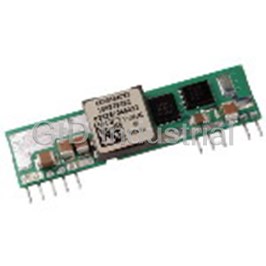

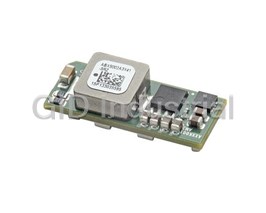
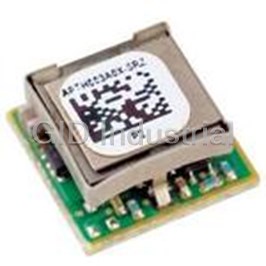
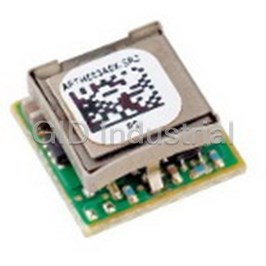
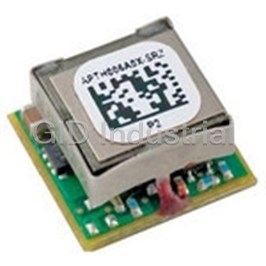




What they say about us
FANTASTIC RESOURCE
One of our top priorities is maintaining our business with precision, and we are constantly looking for affiliates that can help us achieve our goal. With the aid of GID Industrial, our obsolete product management has never been more efficient. They have been a great resource to our company, and have quickly become a go-to supplier on our list!
Bucher Emhart Glass
EXCELLENT SERVICE
With our strict fundamentals and high expectations, we were surprised when we came across GID Industrial and their competitive pricing. When we approached them with our issue, they were incredibly confident in being able to provide us with a seamless solution at the best price for us. GID Industrial quickly understood our needs and provided us with excellent service, as well as fully tested product to ensure what we received would be the right fit for our company.
Fuji
HARD TO FIND A BETTER PROVIDER
Our company provides services to aid in the manufacture of technological products, such as semiconductors and flat panel displays, and often searching for distributors of obsolete product we require can waste time and money. Finding GID Industrial proved to be a great asset to our company, with cost effective solutions and superior knowledge on all of their materials, it’d be hard to find a better provider of obsolete or hard to find products.
Applied Materials
CONSISTENTLY DELIVERS QUALITY SOLUTIONS
Over the years, the equipment used in our company becomes discontinued, but they’re still of great use to us and our customers. Once these products are no longer available through the manufacturer, finding a reliable, quick supplier is a necessity, and luckily for us, GID Industrial has provided the most trustworthy, quality solutions to our obsolete component needs.
Nidec Vamco
TERRIFIC RESOURCE
This company has been a terrific help to us (I work for Trican Well Service) in sourcing the Micron Ram Memory we needed for our Siemens computers. Great service! And great pricing! I know when the product is shipping and when it will arrive, all the way through the ordering process.
Trican Well Service
GO TO SOURCE
When I can't find an obsolete part, I first call GID and they'll come up with my parts every time. Great customer service and follow up as well. Scott emails me from time to time to touch base and see if we're having trouble finding something.....which is often with our 25 yr old equipment.
ConAgra Foods